Sensory Texture and Mastication Physics of Multi-Phase Meat Products
Abstract
:1. Introduction
2. Materials and Methods
2.1. Preparation of Food Model Matrices
2.2. Characterization of the Produced Food Model Matrices
2.2.1. Mechanical Properties
2.2.2. Sensory
2.2.3. Electromyography and Kinematics of Jaw Movement
3. Data Preparation and Modelling
3.1. Feature Extraction
3.2. Statistical Model
4. Results and Discussion
4.1. Determination of Mechanical Properties
4.2. Sensory
4.3. Food Oral Processing
4.3.1. General Trends of Oral Processing
- Initial structure breakdown appears to take place in the very first bites (Figure 4A,B). In this section, bites take long with an indistinct grinding stage. Muscle activity peaks are low, indicating low effort cutting movements. EMGAUC is comparably high because of long cycle times. Velocities are, despite long cycle times, rather fast to enable quick cutting of the samples. Other work also demonstrated that hardness increased the movement area of the jaw [24]. This supports the high velocity at long cycle times, assuming that the initial sample is harder than the swallowable bolus [25].
- Cycle time drops immediately as mastication progresses. As figuratively shown in Figure 4B,C, BLS is mixed with saliva and a transition to a paste-like state is hypothesized [26]. However, power stroke phase steadily gets longer, indicating more grinding activity. Koç, et al. [27] already described this stage and refer to it as power stroke. During the power stroke, structures which do not exhibit a breaking behavior at cutting movements are ground to smaller particle sizes or to soften the structure and thereby enhance the swallowability [27]. This is also reflected in higher muscle activity peaks, while the EMGAUC first experiences a descent due to the rapid drop in cycle time. The velocity slowly decreases.
- Toward the end of the mastication process, cycle time increases again, now simultaneously with the increase of the power stroke duration. This is reflected in increased peak- and AUC values of the muscle activity. The velocity of the jaw further falls rapidly, indicating that mastication is mainly short movement, high power grinding of food material [28]. This is applied to soften remaining structured particles and enable swallowing of the bolus (Figure 4C,D).
4.3.2. Influence of Batter-Like Substance (BLS)
4.4. Comparison of Methods
5. Conclusions
Author Contributions
Funding
Institutional Review Board Statement
Informed Consent Statement
Data Availability Statement
Acknowledgments
Conflicts of Interest
References
- Listrat, A.; Lebret, B.; Louveau, I.; Astruc, T.; Bonnet, M.; Lefaucheur, L.; Picard, B.; Bugeon, J. How muscle structure and composition influence meat and flesh quality. Sci. World J. 2016, 2016, 3182746. [Google Scholar] [CrossRef] [PubMed] [Green Version]
- Oppen, D.; Grossmann, L.; Weiss, J. Insights into characterizing and producing anisotropic food structures. Crit. Rev. Food Sci. Nutr. 2022, 1–19. [Google Scholar] [CrossRef] [PubMed]
- Tyszkiewicz, I.; Kłossowska, B.M.; Wieczorek, U.; Jakubiec-Puka, A. Mechanical Tenderisation of Pork Meat: Protein and Water Release due to Tissue Damage. J. Sci. Food Agric. 1997, 73, 179–185. [Google Scholar] [CrossRef]
- Haack, E.; Schnäckel, W.; Haack, O. Probleme, Ursachen und Lösungen: Grundlagen und Vorgänge bei der Fleischbeabeitung mit Maschinen der Wolftechnologie. Fleischwirtschaft 2003, 83, 52–56. [Google Scholar]
- Berger, L.M.; Gibis, M.; Witte, F.; Terjung, N.; Weiss, J. Influence of meat batter addition in ground beef on structural properties and quality parameters. Eur. Food Res. Technol. 2022, 248, 2509–2520. [Google Scholar] [CrossRef]
- Ilic, J.; Van Den Berg, M.; Oosterlinck, F. How do we eat meat–the role of structure, mechanics, oral processing, and sensory perception in designing meat analogs. In Proceedings of the IOP Conference Series: Earth and Environmental Science, Zlatibor, Serbia, 26–29 September 2021; Volume 854, p. 012036. [Google Scholar] [CrossRef]
- Dekkers, B.L.; Nikiforidis, C.V.; van der Goot, A.J. Shear-induced fibrous structure formation from a pectin/SPI blend. Innov. Food Sci. Emerg. Technol. 2016, 36, 193–200. [Google Scholar] [CrossRef]
- Devezeaux de Lavergne, M.; van de Velde, F.; Stieger, M. Bolus matters: The influence of food oral breakdown on dynamic texture perception. Food Funct. 2017, 8, 464–480. [Google Scholar] [CrossRef] [Green Version]
- Boehm, M.W.; Yakubov, G.E.; Stokes, J.R.; Baier, S.K. The role of saliva in oral processing: Reconsidering the breakdown path paradigm. J. Texture Stud. 2020, 51, 67–77. [Google Scholar] [CrossRef] [Green Version]
- Hack, K.-H.; Buckenhüskes, H.J.; Hoff, W.; Hullemann, G.; Keck, W.; Nagel, E.; Staffe, E. Zerlegen, Standardisieren, Kalkulieren: Praxis-Handbuch der Material-und Betriebswirtschaft; Deutscher Fleischer-Verband: Frankfurt, Germany, 2001. [Google Scholar]
- Breene, W.M. Application of texture profile analysis to instrumental food texture evaluation. J. Texture Stud. 1975, 6, 53–82. [Google Scholar] [CrossRef]
- BVL. Amtliche Sammlung von Untersuchungsverfahren nach § 64 LFGB, § 38 TabakerzG, § 28b GenTG; Beuth Verlag: Berlin, Germany, 2021. [Google Scholar]
- Funami, T.; Ishihara, S.; Kohyama, K. Use of electromyography in measuring food texture. In Food Texture Design and Optimization; John Wiley & Sons: Hoboken, NJ, USA, 2014; pp. 283–307. [Google Scholar] [CrossRef]
- Vinyard, C.J.; Fiszman, S. Using electromyography as a research tool in food science. Curr. Opin. Food Sci. 2016, 9, 50–55. [Google Scholar] [CrossRef] [Green Version]
- Stegeman, D.; Hermens, H. Standards for surface electromyography: The European project Surface EMG for non-invasive assessment of muscles (SENIAM). Enschede Roessingh Res. Dev. 2007, 10, 8–12. [Google Scholar]
- Le Révérend, B.; Saucy, F.; Moser, M.; Loret, C. Adaptation of mastication mechanics and eating behaviour to small differences in food texture. Physiol. Behav. 2016, 165, 136–145. [Google Scholar] [CrossRef] [PubMed]
- Mathoniere, C.; Mioche, L.; Dransfield, E.; Culioli, J. Meat texture characterisation: Comparison of chewing patterns, sensory and mechanical measures. J. Texture Stud. 2000, 31, 183–203. [Google Scholar] [CrossRef]
- Braxton, D.; Dauchel, C.; Brown, W.E. Association between chewing efficiency and mastication patterns for meat, and influence on tenderness perception. Food Qual. Prefer. 1996, 7, 217–223. [Google Scholar] [CrossRef]
- Kohyama, K.; Mioche, L. Chewing behavior observed at different stages of mastication for six foods, studied by electromyography and jaw kinematics in young and elderly subjects. J. Texture Stud. 2004, 35, 395–414. [Google Scholar] [CrossRef]
- Foster, K.D.; Woda, A.; Peyron, M.A. Effect of texture of plastic and elastic model foods on the parameters of mastication. J. Neurophysiol. 2006, 95, 3469–3479. [Google Scholar] [CrossRef]
- Koç, H.; Çakir, E.; Vinyard, C.J.; Essick, G.; Daubert, C.R.; Drake, M.A.; Osborne, J.; Foegeding, E.A. Adaptation of oral processing to the fracture properties of soft solids. J. Texture Stud. 2014, 45, 47–61. [Google Scholar] [CrossRef]
- Piepho, H.P.; Edmondson, R.N. A tutorial on the statistical analysis of factorial experiments with qualitative and quantitative treatment factor levels. J. Agron. Crop. Sci. 2018, 204, 429–455. [Google Scholar] [CrossRef] [Green Version]
- Tornberg, E. Effects of heat on meat proteins—Implications on structure and quality of meat products. Meat Sci. 2005, 70, 493–508. [Google Scholar] [CrossRef]
- Piancino, M.G.; Bracco, P.; Vallelonga, T.; Merlo, A.; Farina, D. Effect of bolus hardness on the chewing pattern and activation of masticatory muscles in subjects with normal dental occlusion. J. Electromyogr. Kinesiol. 2008, 18, 931–937. [Google Scholar] [CrossRef]
- Pu, D.; Duan, W.; Huang, Y.; Zhang, L.; Zhang, Y.; Sun, B.; Ren, F.; Zhang, H.; Tang, Y. Characterization of the dynamic texture perception and the impact factors on the bolus texture changes during oral processing. Food Chem. 2021, 339, 128078. [Google Scholar] [CrossRef] [PubMed]
- Hutchings, J.B.; Lillford, P.J. The perception of food texture—the philosophy of the breakdown path. J. Texture Stud. 1988, 19, 103–115. [Google Scholar] [CrossRef]
- Koç, H.; Drake, M.; Vinyard, C.J.; Essick, G.; van de Velde, F.; Foegeding, E.A. Emulsion filled polysaccharide gels: Filler particle effects on material properties, oral processing, and sensory texture. Food Hydrocoll. 2019, 94, 311–325. [Google Scholar] [CrossRef]
- Lillford, P. Texture and breakdown in the mouth: An industrial research approach. J. Texture Stud. 2018, 49, 213–218. [Google Scholar] [CrossRef]
- Woda, A.; Foster, K.; Mishellany, A.; Peyron, M.A. Adaptation of healthy mastication to factors pertaining to the individual or to the food. Physiol. Behav. 2006, 89, 28–35. [Google Scholar] [CrossRef] [PubMed]
- Lillford, P.J. The importance of food microstructure in fracture physics and texture perception. J. Texture Stud. 2011, 42, 130–136. [Google Scholar] [CrossRef]
- Gravelle, A.J.; Barbut, S.; Marangoni, A.G. Influence of particle size and interfacial interactions on the physical and mechanical properties of particle-filled myofibrillar protein gels. RSC Adv. 2015, 5, 60723–60735. [Google Scholar] [CrossRef]
- Devezeaux de Lavergne, M.; Tournier, C.; Bertrand, D.; Salles, C.; van de Velde, F.; Stieger, M. Dynamic texture perception, oral processing behaviour and bolus properties of emulsion-filled gels with and without contrasting mechanical properties. Food Hydrocoll. 2016, 52, 648–660. [Google Scholar] [CrossRef]
- Bornhorst, G.M.; Singh, R.P. Bolus formation and disintegration during digestion of food carbohydrates. Compr. Rev. Food Sci. Food Saf. 2012, 11, 101–118. [Google Scholar] [CrossRef]
- Jalabert-Malbos, M.-L.; Mishellany-Dutour, A.; Woda, A.; Peyron, M.-A. Particle size distribution in the food bolus after mastication of natural foods. Food Qual. Prefer. 2007, 18, 803–812. [Google Scholar] [CrossRef]
- Agrawal, K.R.; Lucas, P.W.; Prinz, J.F.; Bruce, I.C. Mechanical properties of foods responsible for resisting food breakdown in the human mouth. Arch. Oral Biol. 1997, 42, 1–9. [Google Scholar] [CrossRef]
- Shewan, H.M.; Pradal, C.; Stokes, J.R. Tribology and its growing use toward the study of food oral processing and sensory perception. J. Texture Stud. 2020, 51, 7–22. [Google Scholar] [CrossRef] [PubMed] [Green Version]
- Sarkar, A.; Krop, E.M. Marrying oral tribology to sensory perception: A systematic review. Curr. Opin. Food Sci. 2019, 27, 64–73. [Google Scholar] [CrossRef] [PubMed]
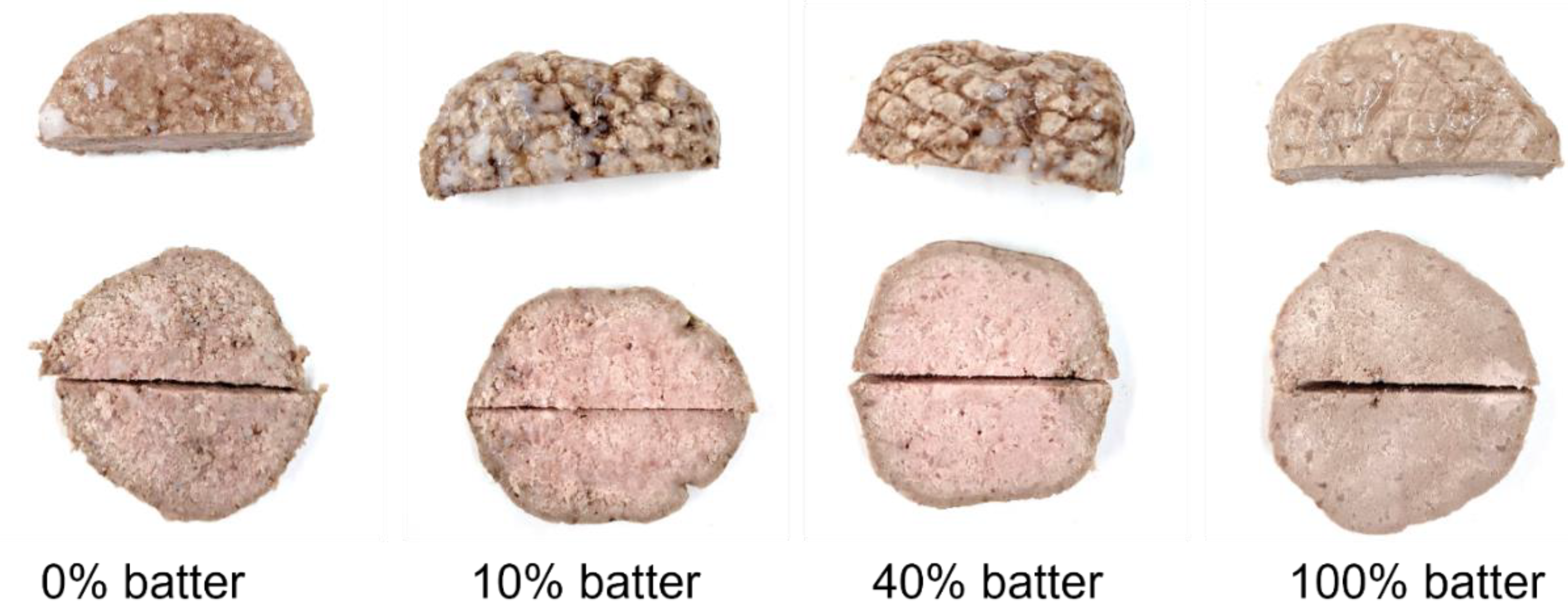
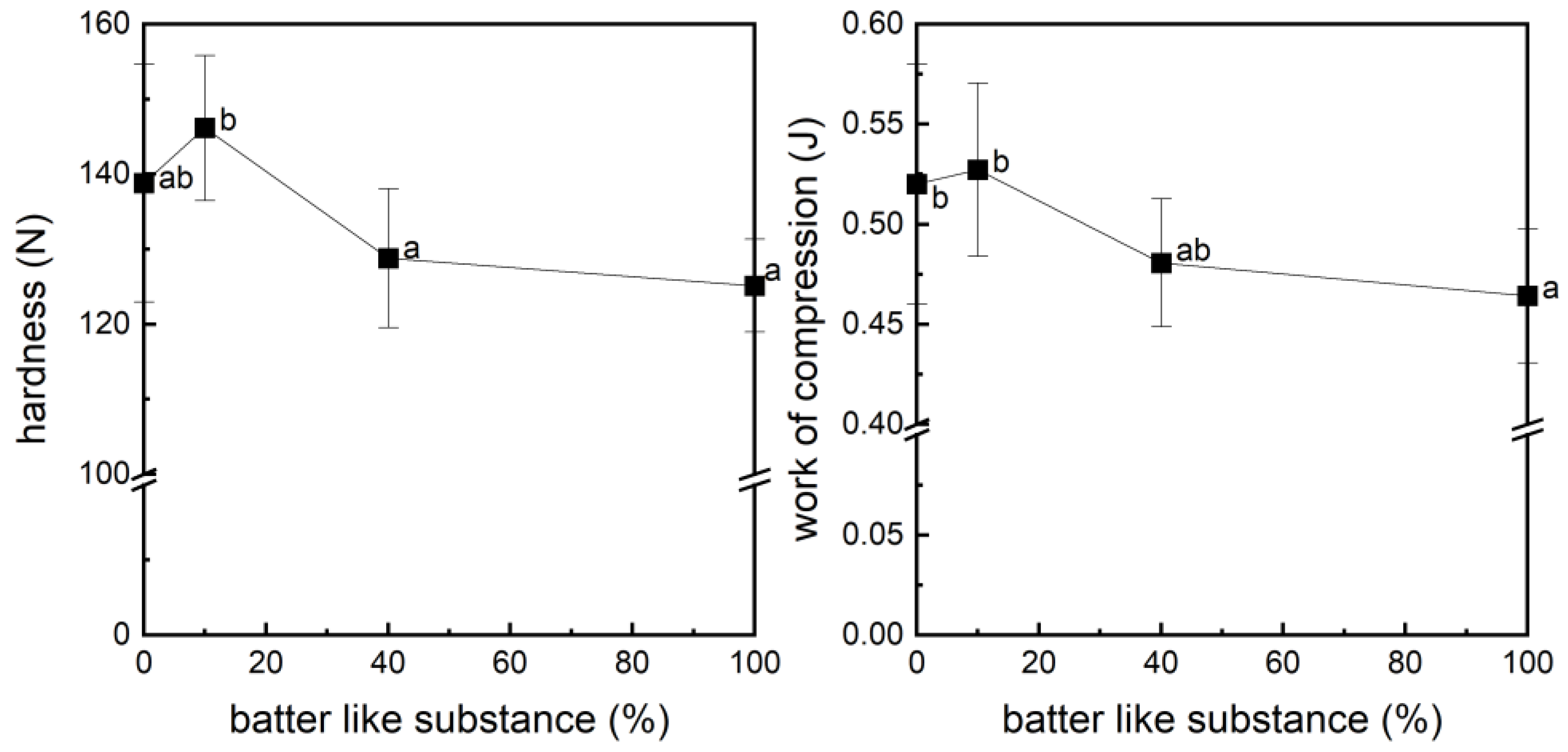
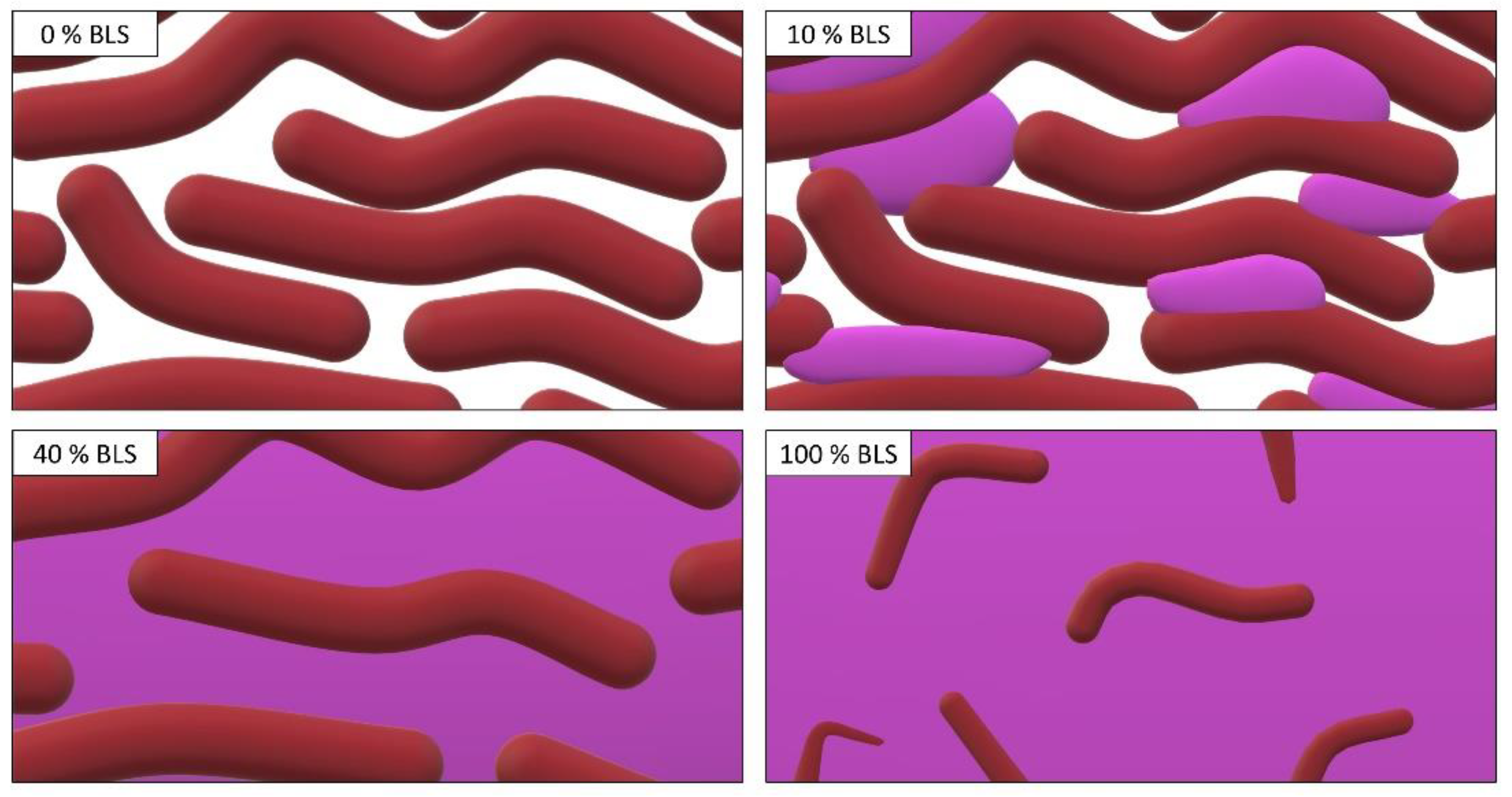
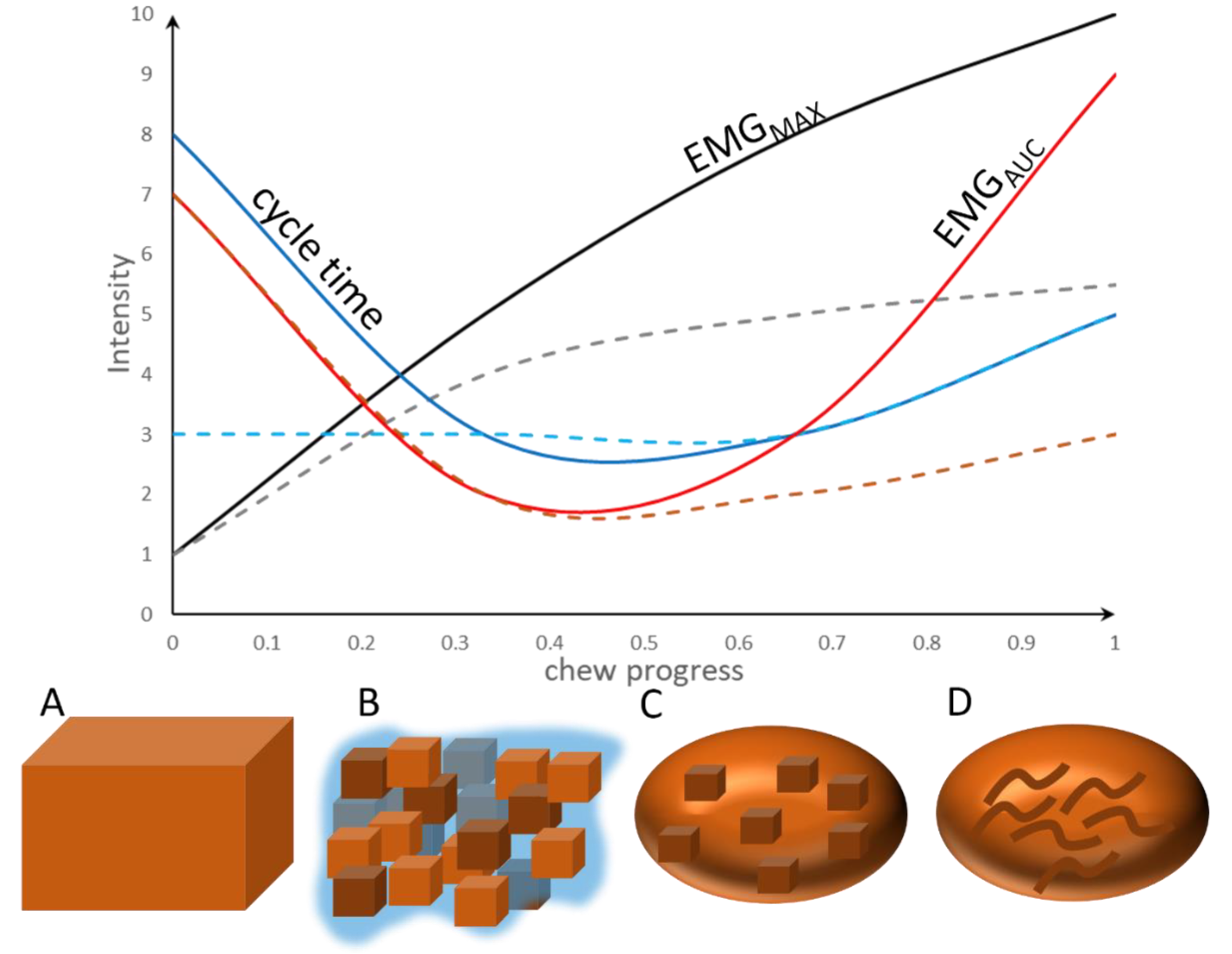

| Feature | Description (Unit) | Illustration |
|---|---|---|
| EMGAUC | Numerical integration of rectified, filtered EMG signal of each individual bite (µV*s) | 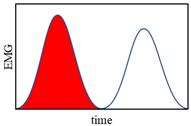 |
| EMGmax | Max value of rectified, filtered EMG signal of each individual bite (µV) |  |
| EMG max/AUC | Relation between peak height and peak area (s−1) | |
| EMGpowerstroke | Numerical integration of rectified, filtered EMG signal during the power stroke phase of each individual bite (µV*s) | 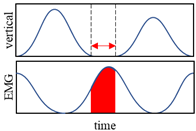 |
| EMG power/AUC | Ratio of EMGpowerstroke to EMGAUC | |
| Time | Time passed between two maximal vertical values (s) | 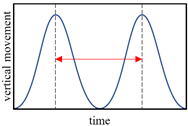 |
| Powerstroke | Duration between downstroke and upstroke with a velocity of less than 15 mm s−1 (s) |  |
| Vclose | Min value of the numerical derivative of vertical movement between two opening positions (mm s−1) | 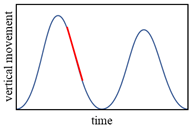 |
| Vopen | Max value of the numerical derivative of vertical movement between two opening positions (mm s−1) | 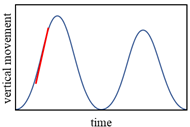 |
| Vertical Amplitude | Maximal vertical value before downstroke (mm) | 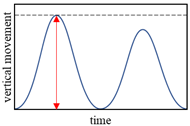 |
| Lateral Amplitude | Maximal lateral movement of one cycle (mm) |  |
| Batter Like Substance | 0% | 10% | 40% | 100% | ||||
|---|---|---|---|---|---|---|---|---|
| Mean | S.D. | Mean | S.D. | Mean | S.D. | Mean | S.D. | |
| Hardness | 4.24 a | 2.05 | 4.29 a | 1.57 | 4.62 a | 1.40 | 3.35 a | 2.41 |
| Fibrousness | 5.89 a | 1.26 | 5.90 a | 2.10 | 5.14 a | 1.55 | 2.51 b | 1.67 |
| Juiciness | 5.21 a | 1.60 | 4.65 a | 1.67 | 4.33 a | 1.53 | 2.90 b | 1.61 |
| Energy | 5.46 a | 1.93 | 5.23 a | 1.74 | 4.55 a | 1.85 | 2.89 b | 1.53 |
| Overall | 5.71 a | 1.75 | 5.17 a | 1.50 | 4.53 ab | 1.90 | 3.23 b | 1.78 |
| Effect | Intercept | Batter (B) | Chew (C) | B × C | C2 | B2 |
|---|---|---|---|---|---|---|
| EMG AUC (µV s) | ||||||
| Mean | 35.1677 | −5.1507 | −10.0779 | −4.3475 | 11.7803 | 4.5331 |
| S.E. | 3.7159 | 4.3206 | 3.2128 | 2.0079 | 2.8922 | 3.9388 |
| p-value | <0.0001 | 0.2333 | 0.0017 | 0.0305 | <0.0001 | 0.2499 |
| EMG max (µV) | ||||||
| Mean | 148.87 | −62.1281 | 124.03 | −22.9231 | −65.1853 | 54.4199 |
| S.E. | 22.1501 | 23.3565 | 22.5704 | 14.4537 | 20.2446 | 20.6982 |
| p-value | 0.0003 | 0.0079 | <0.0001 | 0.1129 | 0.0013 | 0.0086 |
| EMG max/AUC (s−1) | ||||||
| Mean | 4.4959 | −0.927 | 4.2066 | 0.01616 | −2.9356 | 0.8039 |
| S.E. | 0.3963 | 0.385 | 0.3532 | 0.2165 | 0.3188 | 0.3452 |
| p-value | <0.0001 | 0.0161 | <0.0001 | 0.9405 | <0.0001 | 0.02 |
| EMG powerstroke (µV s) | ||||||
| Mean | 9.0186 | −5.0797 | 4.8353 | −2.302 | 5.7366 | 3.9511 |
| S.E. | 2.7509 | 3.0799 | 2.5177 | 1.5537 | 2.2707 | 2.7902 |
| p-value | 0.0135 | 0.0992 | 0.0549 | 0.1386 | 0.0116 | 0.1569 |
| EMG power/AUC (-) | ||||||
| Mean | 0.2307 | −0.1615 | 0.271 | 0.01255 | −0.00373 | 0.1089 |
| S.E. | 0.0393 | 0.06479 | 0.04204 | 0.02575 | 0.03795 | 0.05962 |
| p-value | 0.0006 | 0.0128 | <0.0001 | 0.6259 | 0.9218 | 0.068 |
| Time (s) | ||||||
| Mean | 0.6976 | −0.09119 | −0.1699 | 0.03911 | 0.1542 | 0.04917 |
| S.E. | 0.03035 | 0.04465 | 0.02866 | 0.01741 | 0.0259 | 0.04113 |
| p-value | <0.0001 | 0.0412 | <0.0001 | 0.0248 | <0.0001 | 0.232 |
| Powerstroke (s) | ||||||
| Mean | 0.1757 | −0.06258 | 0.03678 | 0.007568 | 0.02076 | 0.03995 |
| S.E. | 0.01769 | 0.02572 | 0.01471 | 0.008854 | 0.01331 | 0.02381 |
| p-value | <0.0001 | 0.015 | 0.0125 | 0.3927 | 0.1191 | 0.0935 |
| Vclose (mm s−1) | ||||||
| Mean | 104.71 | 14.5181 | 3.7284 | −4.7666 | −15.811 | −8.4393 |
| S.E. | 7.2857 | 7.2072 | 7.2348 | 4.3848 | 6.5414 | 6.4043 |
| p-value | <0.0001 | 0.0441 | 0.6064 | 0.2771 | 0.0157 | 0.1877 |
| Vopen (mm s−1) | ||||||
| Mean | 117.58 | 31.6309 | 14.2279 | −4.7241 | −26.6539 | −20.9138 |
| S.E. | 8.9877 | 9.9257 | 8.6794 | 5.2932 | 7.8408 | 8.9484 |
| p-value | <0.0001 | 0.0015 | 0.1013 | 0.3722 | 0.0007 | 0.0195 |
| Vertical Amplitude (mm) | ||||||
| Mean | 16.8625 | 2.6603 | −9.5732 | 0.01555 | 5.4739 | −1.7459 |
| S.E. | 0.5776 | 0.9818 | 0.7773 | 0.4746 | 0.7021 | 0.8926 |
| p-value | <0.0001 | 0.0068 | <0.0001 | 0.9739 | <0.0001 | 0.0506 |
| Lateral Amplitude (mm) | ||||||
| Mean | 2.5051 | 0.6925 | −0.1812 | −0.07421 | 0.09174 | −0.5124 |
| S.E. | 0.1624 | 0.3948 | 0.2706 | 0.1625 | 0.245 | 0.3626 |
| p-value | <0.0001 | 0.0795 | 0.5033 | 0.648 | 0.7081 | 0.1577 |
| batter-like substance | 0% | 10% | 40% | 100% |
| Sensory |  system A |  system B | ||
| Texture |  medium |  hard |  soft | |
| Oral processing | ||||
| EMG |  decrease with batter-like substance | |||
| Velocity |  increase with batter-like substance | |||
Publisher’s Note: MDPI stays neutral with regard to jurisdictional claims in published maps and institutional affiliations. |
© 2022 by the authors. Licensee MDPI, Basel, Switzerland. This article is an open access article distributed under the terms and conditions of the Creative Commons Attribution (CC BY) license (https://creativecommons.org/licenses/by/4.0/).
Share and Cite
Oppen, D.; Berger, L.M.; Gibis, M.; Weiss, J. Sensory Texture and Mastication Physics of Multi-Phase Meat Products. Appl. Sci. 2022, 12, 11076. https://doi.org/10.3390/app122111076
Oppen D, Berger LM, Gibis M, Weiss J. Sensory Texture and Mastication Physics of Multi-Phase Meat Products. Applied Sciences. 2022; 12(21):11076. https://doi.org/10.3390/app122111076
Chicago/Turabian StyleOppen, Dominic, Lisa M. Berger, Monika Gibis, and Jochen Weiss. 2022. "Sensory Texture and Mastication Physics of Multi-Phase Meat Products" Applied Sciences 12, no. 21: 11076. https://doi.org/10.3390/app122111076






